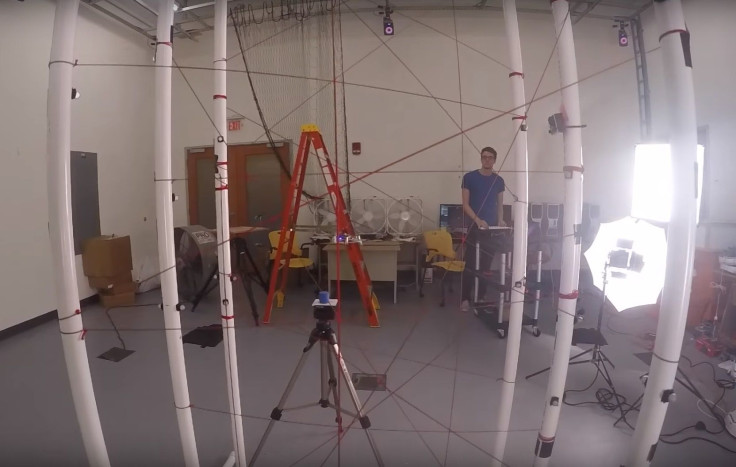Autonomous cars aren't cool. You know what's cool? Autonomous drones. At least that's what Justin Timberlake's character Sean Parker from The Social Network would have said (It's probable that the real Sean of Napster would say this too). Drone technology is advancing at a blistering rate and a team at the Massachusetts Institute of Technology (MIT) is ready to take things to the next level.
According to the MIT News blog, researchers from the MIT Computer Science and Artificial Intelligence Laboratory (CSAIL) demonstrated software that enables a drones to navigate through an artificial forest with 26 distinct obstacles that must be avoided. The drone was able to perform impressive moves like stop on a dime and make hairpin movements over, under, and around the obstacles. In a demo video, a small quadrotor done successfully performed figure-eights around the forest of string and PVC pipes.
According to recent graduate Benoit Landry '14 MNG '15, the first author of the paper accepted to IEEE International Conference on Robotics and Automation (ICRA), the algorithm was initially used to plan the footsteps for CSAIL's famous Atlas Robot at the 2015 http://news.mit.edu/2015/robotics-competition-algorithms-0611DARPA Robotics Challenge. Instead of creating equations to help the robot avoid obstacles, it simply allowed the robot to search for a collision-free route.
“Rather than plan paths based on the number of obstacles in the environment, it’s much more manageable to look at the inverse: the segments of space that are ‘free’ for the drone to travel through,” Landry said via MIT News. “Using free-space segments is a more ‘glass-half-full’ approach that works far better for drones in small, cluttered spaces.”
In a second CSAIL project, PhD student Anirudha Majumdar shared his research of a fixed wing-plane that is capable of avoiding obstacles without any prior knowledge of the space it is in. Remarkably, even in the face of wind gusts designed to create a disruption, the plane is still capable of making the adjustments necessary to navigate unscathed.
“As the drone flies, it continuously searches through the library to stitch together a series of paths that are computationally guaranteed to avoid obstacles,” said Majumdar via MIT News. “Many of the individual funnels will not be collision-free, but with a large-enough library you can be certain that your route will be clear.”
The algorithms refined by the teams at MIT are available online for free. Even though autonomous drones will not serve the market for a while, the is a market that will desperately seek it. This technology will allow drones to scout volatile zones affected by natural disaster and assist first responders in the search for survivors.














![[EG April 19] Best 'Stardew Valley' Mods That Will Change](https://d.player.one/en/full/226012/eg-april-19-best-stardew-valley-mods-that-will-change.png?w=380&h=275&f=955520b8313253ee3c39c791f6210f38)



